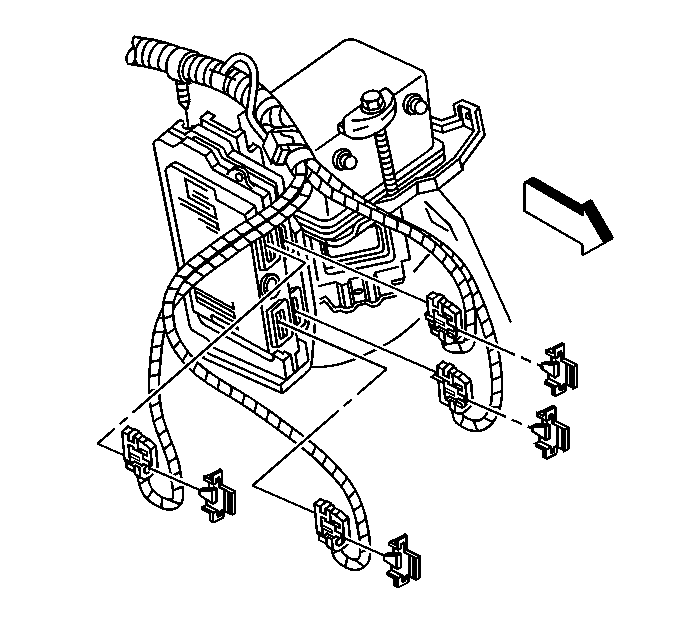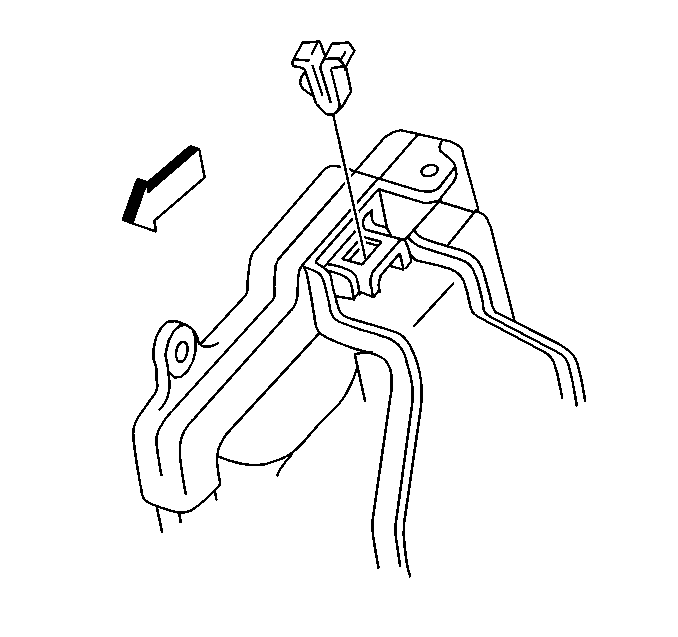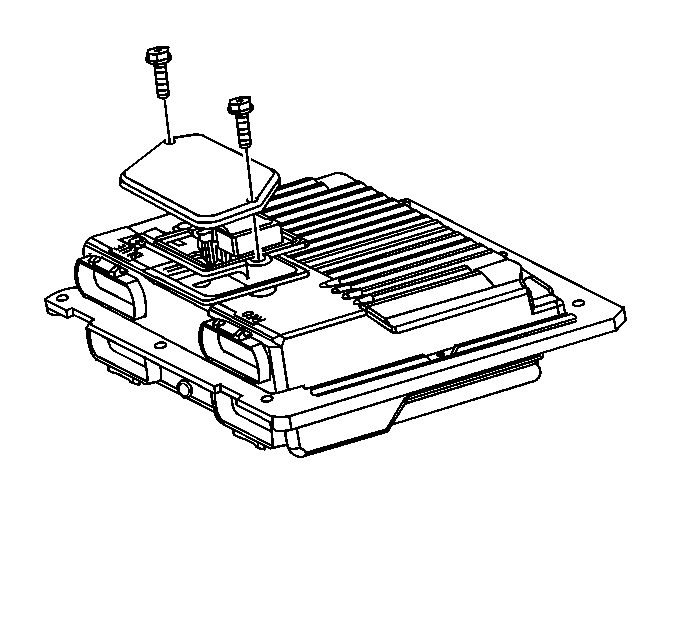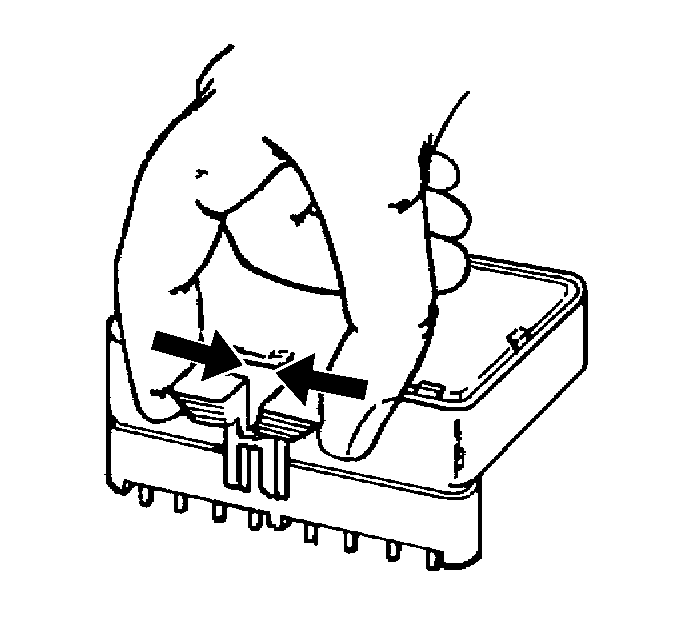Notice: In order to prevent possible electrostatic discharge (ESD) damage to the VCM, do not touch the connector pins or soldered components on the circuit board.
Important:
• Service of the vehicle control module (VCM) consists of either
replacement of the VCM or reprogramming of the VCM. • If the VCM is being replaced, the knock sensor (KS)
module must be transferred to the replacement VCM. • The replacement VCM must be programmed before the vehicle will
run. • The replacement VCM must have the Passlock Reprogramming procedure
performed before the vehicle will run. • The replacement VCM must have the CKP System Variation Learn procedure
performed or a DTC P1336 will set.
A shorted solenoid, relay coil, or harness will not damage the output driver module (ODM) in the VCM. A shorted solenoid, relay coil, or harness will cause the circuit and the controlled component to be inoperative.
When the circuit fault is not present or the technician has repaired the fault, the output driver module (ODM) will again operate in a normal manner due to its fault protected design.
Removal Procedure
- Disconnect the negative battery cable.
- Disconnect the retainer clips and VCM electrical connectors.
- Pull the wiring harness pin, which is underneath the wiring harness on top of the VCM bracket, out from the VCM bracket.
- Pinch the metal ends belonging to the V-clip together.
- Pull the V-clip out of the VCM bracket tongue.
- Push the VCM bracket tongue until the VCM bracket is free from the battery tray bracket.
- Guide the VCM bracket upwards and between the master cylinder reservoir and the A/C hose to remove the bracket out of the engine compartment.
- Press all three detent clips to separate the VCM bracket into two halves.
- Lift the VCM out of the VCM bracket.
- Remove the access cover screws.
- Remove the VCM access cover.
- Gently pinch the retaining clip.
- Pull upward to remove the Knock Sensor Module.
Caution: Unless directed otherwise, the ignition and start switch must be in the OFF or LOCK position, and all electrical loads must be OFF before servicing any electrical component. Disconnect the negative battery cable to prevent an electrical spark should a tool or equipment come in contact with an exposed electrical terminal. Failure to follow these precautions may result in personal injury and/or damage to the vehicle or its components.




Important: The remaining steps are only necessary for a VCM replacement:


Important: Since the Knock Sensor Module will be used in the replacement VCM, place the Knock Sensor Module in an area where it will not be damaged.
Installation Procedure
Notice: In order to prevent possible electrostatic discharge (ESD) damage to the VCM, do not touch the connector pins or soldered components on the circuit board.
Important: Ensure that the VCM being installed is the original VCM, or that the replacement VCM service number is identical to the original VCM service number.
- Align the notches of the Knock Sensor Module with the notches in the Knock Sensor Module socket.
- Install the Knock Sensor Module in the Knock Sensor Module socket.
- Install the access cover on the VCM.
- Install the access cover screws.
- Align the VCM with one of the VCM bracket halves.
- Snap the two VCM bracket halves together.
- Grasp the VCM bracket such that the RED VCM connector receptacle is located on the bottom and on the driver side of the vehicle.
- Guide the VCM bracket between the master cylinder reservoir and the A/C hose into the slot near the driver side wheel well.
- Insert the VCM bracket tongue into the retaining brace slot.
- Insert the V-clip into the VCM bracket tongue.
- insert the wiring harness pin into the VCM bracket hole.
- Connect the VCM electrical connectors and retainer clips.
- Connect the negative battery cable.
- Program the VCM.

Important: Steps 1-4 are only necessary for a new VCM installation:
Important: Press only on the ends of the Knock Sensor Module. Gently press on the Knock Sensor Module until it is firmly seated in the socket. Listen for the click.

Notice: Use the correct fastener in the correct location. Replacement fasteners must be the correct part number for that application. Fasteners requiring replacement or fasteners requiring the use of thread locking compound or sealant are identified in the service procedure. Do not use paints, lubricants, or corrosion inhibitors on fasteners or fastener joint surfaces unless specified. These coatings affect fastener torque and joint clamping force and may damage the fastener. Use the correct tightening sequence and specifications when installing fasteners in order to avoid damage to parts and systems.
Tighten
Tighten the access cover screws to 4.8 N·m (42 lb in).



VCM Programming
- Take the following steps in order to set-up for programming the VCM (EEPROM) .
- Refer to an updated Techline terminal and follow the user's instructions for VCM programming.
- If the VCM fails to program, do the following functions:
- Perform the Passlock Reprogramming Procedure. Refer to PASSLOCK Reprogramming Seed and Key in Theft Deterrent.
- Perform the CKP System Variation Learn Procedure. Refer to Crankshaft Position System Variation Learn .
- For a functional check, perform the Powertrain On-Board Diagnostic (OBD) System Check.
| • | The battery is fully charged. |
| • | The ignition is ON. |
| • | The Data Link Connector (DLC) is secure. |
| • | Check all the VCM connections. |
| • | Check the ITCS terminal and equipment for the latest software version. |
| • | Try again to program the VCM. If the programming fails again, replace the VCM. |
